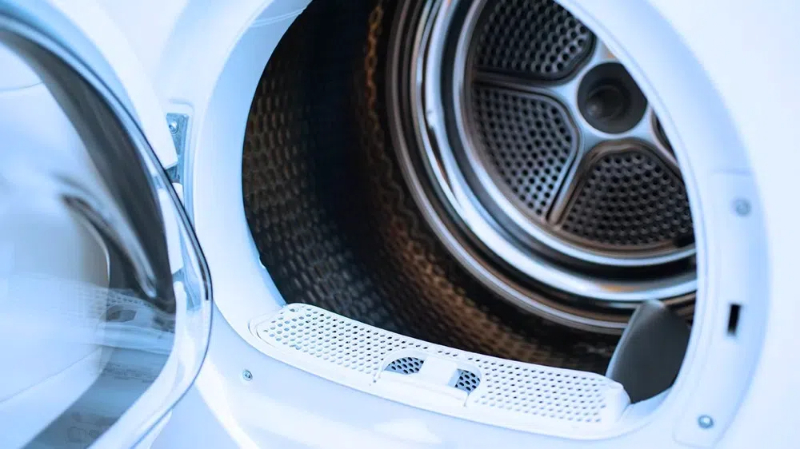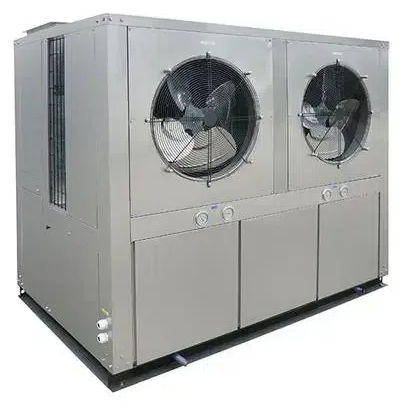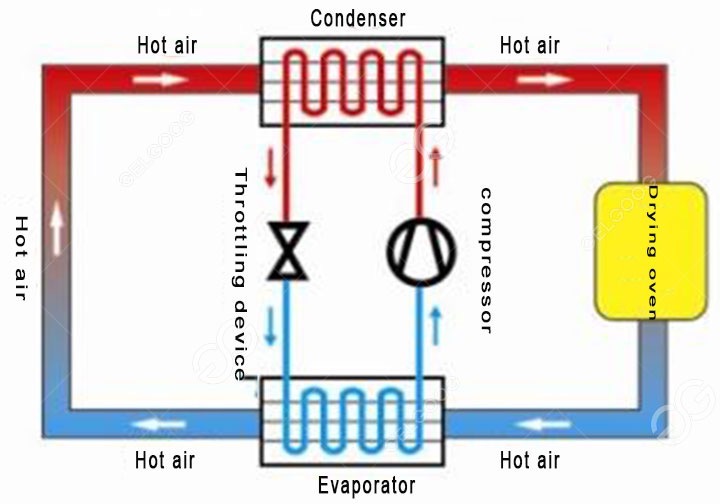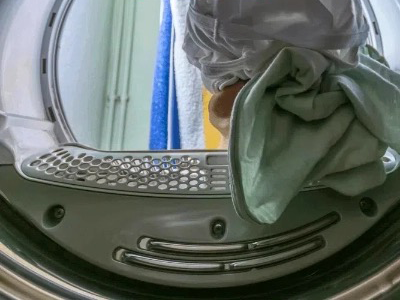
Content Menu
● Introduction to Heat Pump Dryer Technology
● Understanding Heat Pump Dryer Efficiency
>> The Science Behind the Technology
● Heat Pump vs Traditional Dryers: A Comparison
>> Energy Consumption
>> Drying Temperature
>> Venting Requirements
● Energy-Saving Laundry Appliances: The Future of Home Care
>> Environmental Impact
>> Long-Term Cost Savings
● Ventless Dryer Technology: Flexibility and Convenience
>> Installation Flexibility
>> Improved Indoor Air Quality
● Heat Pump Dryer Temperature: Gentle on Clothes, Cool on Rooms
>> Low Operating Temperatures
>> Closed-Loop System
● Eco-Friendly Clothes Drying: A Step Towards Sustainable Living
>> Reduced Energy Consumption
>> Water Conservation
● Heat Pump Dryer Pros and Cons: Making an Informed Decision
>> Pros:
>> Cons:
● Condensing Dryer vs Heat Pump: Understanding the Differences
>> Operating Principle
>> Energy Efficiency
>> Drying Performance
● Heat Pump Dryer Installation: What You Need to Know
>> Space Requirements
>> Electrical Requirements
>> Drainage Options
● Moisture Removal in Heat Pump Dryers: Efficient and Effective
>> Condensation Process
>> Humidity Sensors
● Conclusion: Embracing the Future of Laundry
● Frequently Asked Questions
>> 1. How much energy do heat pump dryers save compared to traditional dryers?
>> 2. Are heat pump dryers suitable for all types of fabrics?
>> 3. Do heat pump dryers require special maintenance?
>> 4. Can heat pump dryers be installed in any room?
>> 5. How long do heat pump dryers typically last?
Introduction to Heat Pump Dryer Technology
In the ever-evolving world of home appliances, heat pump dryers have emerged as a game-changing solution for energy-conscious consumers. These innovative machines are transforming the way we think about laundry, offering a perfect blend of efficiency, performance, and environmental friendliness. But one question that often arises is: Do heat pump dryers make the room hot? To answer this and explore the many facets of heat pump dryer technology, let's dive into the inner workings, benefits, and considerations of these modern appliances.
Understanding Heat Pump Dryer Efficiency
Heat pump dryers represent a significant leap forward in laundry technology. Unlike traditional dryers that expel hot, moist air outside, heat pump dryers operate on a closed-loop system. This innovative approach recycles hot air within the machine, making them incredibly energy-efficient.
The Science Behind the Technology
At the heart of a heat pump dryer is a system similar to that found in refrigerators and air conditioners. It consists of four main components:
1. Evaporator
2. Compressor
3. Condenser
4. Expansion valve
The process begins when warm, moist air from the drum passes over the evaporator. The refrigerant in the evaporator absorbs heat from this air, causing the moisture to condense. The now-cooled air then moves to the condenser, where it's reheated and sent back into the drum to continue drying clothes. This cycle repeats, efficiently drying your laundry without the need for external venting.
Heat Pump vs Traditional Dryers: A Comparison
When comparing heat pump dryers to their traditional counterparts, several key differences become apparent:
Energy Consumption
Heat pump dryers are significantly more energy-efficient than conventional dryers. They can use up to 50% less energy, translating to lower electricity bills and a reduced carbon footprint.
Drying Temperature
Traditional dryers operate at high temperatures, often reaching 250°F to 300°F. In contrast, heat pump dryers function at much lower temperatures, typically between 120°F to 140°F. This gentler drying process is not only more energy-efficient but also kinder to your clothes.
Venting Requirements
One of the most significant advantages of heat pump dryers is that they don't require external venting. This ventless design offers greater flexibility in terms of installation and can be a game-changer for apartments or homes where venting is challenging.

Energy-Saving Laundry Appliances: The Future of Home Care
As we move towards a more sustainable future, energy-saving appliances like heat pump dryers are becoming increasingly popular. These machines align perfectly with the growing consumer demand for eco-friendly home solutions.
Environmental Impact
By consuming less energy and operating at lower temperatures, heat pump dryers contribute to reducing greenhouse gas emissions. This makes them an excellent choice for environmentally conscious consumers looking to minimize their carbon footprint.
Long-Term Cost Savings
While heat pump dryers may have a higher upfront cost, their energy efficiency translates to significant savings over time. The reduced energy consumption can lead to lower electricity bills, offsetting the initial investment.
Ventless Dryer Technology: Flexibility and Convenience
The ventless nature of heat pump dryers opens up a world of possibilities for home design and laundry placement. Without the need for external venting, these appliances can be installed in various locations throughout the home.
Installation Flexibility
Heat pump dryers can be placed in closets, bathrooms, or even living spaces without the worry of hot, moist air being expelled. This flexibility is particularly beneficial for apartment dwellers or those with limited laundry space options.
Improved Indoor Air Quality
Since heat pump dryers don't vent to the outside, they don't introduce outdoor pollutants into your home. This can be especially beneficial for those with allergies or respiratory sensitivities.
Heat Pump Dryer Temperature: Gentle on Clothes, Cool on Rooms
One of the most common questions about heat pump dryers is whether they make the room hot. The answer is a resounding no. In fact, heat pump dryers are known for their ability to maintain a comfortable room temperature during operation.
Low Operating Temperatures
As mentioned earlier, heat pump dryers operate at much lower temperatures than traditional dryers. This not only makes them gentler on your clothes but also means they don't produce excess heat that could warm up your laundry room.
Closed-Loop System
The closed-loop system of a heat pump dryer means that hot air is continuously recycled within the machine. Unlike traditional dryers that expel hot air, heat pump dryers keep the warmth contained, preventing it from heating up the surrounding space.
Eco-Friendly Clothes Drying: A Step Towards Sustainable Living
In an era where sustainability is at the forefront of consumer consciousness, heat pump dryers offer an eco-friendly alternative to traditional laundry methods.
Reduced Energy Consumption
The energy efficiency of heat pump dryers directly translates to a reduced environmental impact. By using less electricity, these appliances help decrease the demand for energy production and the associated carbon emissions.
Water Conservation
Some heat pump dryers come with built-in water collection systems. The condensed water from the drying process can be collected and used for other purposes, such as watering plants or ironing, further contributing to resource conservation.
Heat Pump Dryer Pros and Cons: Making an Informed Decision
Like any appliance, heat pump dryers come with their own set of advantages and disadvantages. Understanding these can help you make an informed decision about whether a heat pump dryer is right for your home.
Pros:
1. High energy efficiency
2. Lower operating costs
3. Gentle on clothes
4. No need for external venting
5. Cooler operation
6. Environmentally friendly
Cons:
1. Higher upfront cost
2. Longer drying times
3. Smaller drum capacity in some models
4. Regular maintenance required (e.g., cleaning filters and emptying water tanks)

Condensing Dryer vs Heat Pump: Understanding the Differences
While both condensing dryers and heat pump dryers are ventless options, there are key differences between the two technologies.
Operating Principle
Condensing dryers use a heating element to warm the air and a heat exchanger to cool it, causing moisture to condense. Heat pump dryers, on the other hand, use a refrigerant-based system to heat and cool the air more efficiently.
Energy Efficiency
Heat pump dryers are significantly more energy-efficient than condensing dryers. While condensing dryers are an improvement over traditional vented dryers, they still consume more energy than their heat pump counterparts.
Drying Performance
Both types of dryers can effectively dry clothes, but heat pump dryers generally offer superior performance in terms of energy efficiency and gentleness on fabrics.
Heat Pump Dryer Installation: What You Need to Know
Installing a heat pump dryer is generally straightforward, especially given its ventless design. However, there are a few considerations to keep in mind:
Space Requirements
While heat pump dryers don't need external venting, they do require adequate space for air circulation. Ensure there's sufficient clearance around the machine as per the manufacturer's instructions.
Electrical Requirements
Most heat pump dryers operate on standard 120V outlets, making them easy to install in most homes. However, always check the specific electrical requirements of your chosen model.
Drainage Options
Heat pump dryers produce condensed water during operation. While many models come with a collection tank that needs to be emptied manually, some offer the option to connect directly to a drain for automatic water disposal.
Moisture Removal in Heat Pump Dryers: Efficient and Effective
The moisture removal process in heat pump dryers is a key factor in their efficiency and effectiveness.
Condensation Process
As warm, moist air from the drum passes over the cold evaporator coils, the moisture condenses into water. This water is then either collected in a tank or drained away, depending on the model.
Humidity Sensors
Many heat pump dryers are equipped with humidity sensors that monitor the moisture level in the drum. These sensors help the dryer adjust its operation for optimal drying, preventing over-drying and saving energy.
Conclusion: Embracing the Future of Laundry
Heat pump dryers represent a significant advancement in laundry technology, offering a perfect blend of efficiency, performance, and environmental responsibility. While they may have a higher upfront cost, the long-term benefits in terms of energy savings, gentle fabric care, and reduced environmental impact make them an attractive option for many households.
As we've explored, heat pump dryers do not make the room hot. Instead, they operate at lower temperatures and keep the warm air contained within their closed-loop system. This, combined with their ventless design and energy efficiency, makes them an excellent choice for those looking to upgrade their laundry setup while maintaining a comfortable home environment.
Whether you're renovating your laundry room, looking for an eco-friendly appliance upgrade, or simply curious about the latest in laundry technology, heat pump dryers offer a compelling solution that's worth considering.

Frequently Asked Questions
1. How much energy do heat pump dryers save compared to traditional dryers?
Heat pump dryers can save up to 50% of the energy used by traditional dryers. This significant reduction in energy consumption translates to lower electricity bills and a smaller carbon footprint.
2. Are heat pump dryers suitable for all types of fabrics?
Yes, heat pump dryers are generally suitable for all types of fabrics. Their lower operating temperatures make them gentler on clothes, reducing the risk of damage to delicate items. However, always check garment care labels and follow the manufacturer's recommendations.
3. Do heat pump dryers require special maintenance?
While heat pump dryers don't require extensive maintenance, regular cleaning of the lint filter and occasional cleaning of the heat exchanger are important. Some models also have water collection tanks that need to be emptied periodically if not connected to a drain.
4. Can heat pump dryers be installed in any room?
Thanks to their ventless design, heat pump dryers can be installed in various locations. However, they still require adequate space for air circulation and access for maintenance. Always follow the manufacturer's installation guidelines for optimal performance and safety.
5. How long do heat pump dryers typically last?
With proper care and maintenance, heat pump dryers can last 10-15 years or more. Their durability, combined with energy savings over time, can make them a cost-effective choice in the long run despite their higher initial cost.












